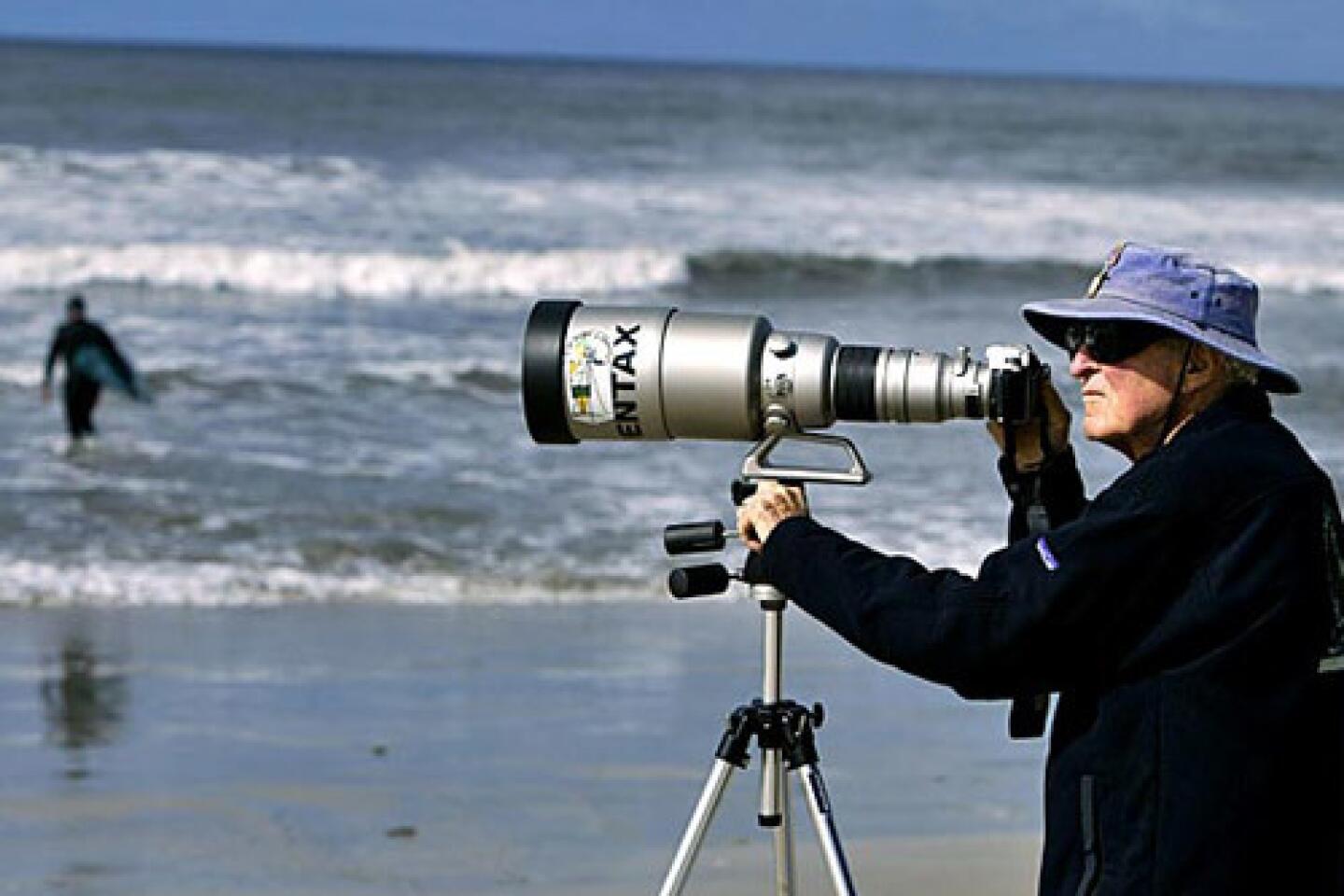Dugald Stermer dies at 74; artist updated 1984 Olympic medals
As the art director of the influential counterculture magazine Ramparts, artist Dugald Stermer had already left an imprint on popular culture when he was asked to update the design of the Olympic medals for the 1984 Games in Los Angeles.
At their unveiling, Stermer recognized the historic reach of the project by saying he was delighted that “the medals will last a lot longer than I will.”
Known for treasuring classic typography, he brought the same eye to the medallions. He mainly added depth and definition to the figure of Lady Victory that graces the front of the medal created in 1928 by Florentine artist Giuseppe Cassioli.
On the back, Stermer restored the original design, which had not been used since the 1968 Games. He added musculature to the scene of male athletes carrying the victor and made one other subtle yet significant change — he modified their facial features to reflect the ethnic diversity among Olympians.
Stermer, who also was a noted wildlife illustrator and chaired the illustration department at California College of the Arts, died Dec. 2 of respiratory and cardiac failure at California Pacific Medical Center in San Francisco, said his daughter, Megan. He was 74.
“He was extremely honored to be designing the medals,” his daughter said. “He said it was so meaningful from a personal standpoint.”
From 1964 to 1970, Stermer was at the visual helm of Ramparts, giving the young San Francisco-based publication a stylized look that helped transform it into the leading magazine of the American left.
“The design and visual content were critical, an absolutely indispensable part of the magazine’s success,” according to Peter Richardson, who wrote a 2009 book on Ramparts.
“At that time there were visually interesting magazines and politically progressive ones, but not both,” Richardson told the Society of Publication Designers in 2009. “Ramparts took more chances visually than its stodgier [mostly East Coast] political counterparts.”
The typography Stermer employed was classic and restrained, but the art direction was anything but.
One antiwar cover in 1967 showcased the hands of Stermer and three of the magazine’s editors burning their draft cards. The four men were called to testify before a grand jury because of it.
For another cover, in 1968, on Mark Twain’s political views Stermer ran an image of an American flag as redesigned by Twain — instead of stars, it had 50 skulls and crossbones.
Stermer’s “originality and visual wit suddenly gave the magazine style,” The Times said in 1967. His approach to typography is also credited with influencing the early design of Rolling Stone magazine.
When Stermer left Ramparts, which would fold in 1975, he increasingly turned toward illustration.
In the 1970s, he made his first wildlife drawings when he failed to find illustrations of seabirds to run in Oceans magazine. His illustrations were exactingly rendered in pencil with a watercolor wash.
“He started this new style, and it kind of hit a chord,” his daughter said. “Sort of classic wildlife painting that he made a little more contemporary.”
Dugald Robert Stermer was born Dec. 17, 1936, in Los Angeles to Robert Newton, who worked for an aircraft manufacturer, and the former Mary Blue. His mother was a painter and his grandmother was a woodcarver who passed on the skill.
From childhood on, he drew. Finding art school too restrictive, he switched to UCLA and earned a bachelor’s degree in art in 1960.
“I never wanted to be a fine artist. I always wanted to carry on a conversation with the public,” Stermer said in the 2004 book “The Undressed Art: Why We Draw.”
His wildlife books include a series of portraits of “Vanishing Creatures” (1980) and “Vanishing Flora” (1995), which Stermer once said he viewed as a plea to save species. His 1995 book “Birds & Bees: A Sexual Study” gave the public a rare, “tasteful and informative” look at the sexual activities of animals as varied as fish, simians and reptiles, the Houston Chronicle said in 1995.
Tapped in 1989 to teach illustration at California College of the Arts in the Bay Area, he was named the department chair in 1994.
A two-year series of wildlife drawings he did for The Times debuted in 2003 with an elk and ended with a green sea turtle but also included plants. Each entry was meticulously labeled in a flowing script reminiscent of another age. For models, he relied on photographs.
“I’m not interested in going out into their habitat,” Stermer told the San Francisco Chronicle in 1996. “I’m a conservationist, but I don’t walk in the woods. I love just sitting here and drawing pictures.”
In addition to his daughter, Megan, of San Francisco, the twice-divorced Stermer is survived by four other children, Dugald of Sherman Oaks, Christopher of Sacramento, Colin of Alameda and Crystal of San Francisco; five grandchildren, and a sister, Robin Crickmore of New York City.
More to Read
Start your day right
Sign up for Essential California for the L.A. Times biggest news, features and recommendations in your inbox six days a week.
You may occasionally receive promotional content from the Los Angeles Times.





















































